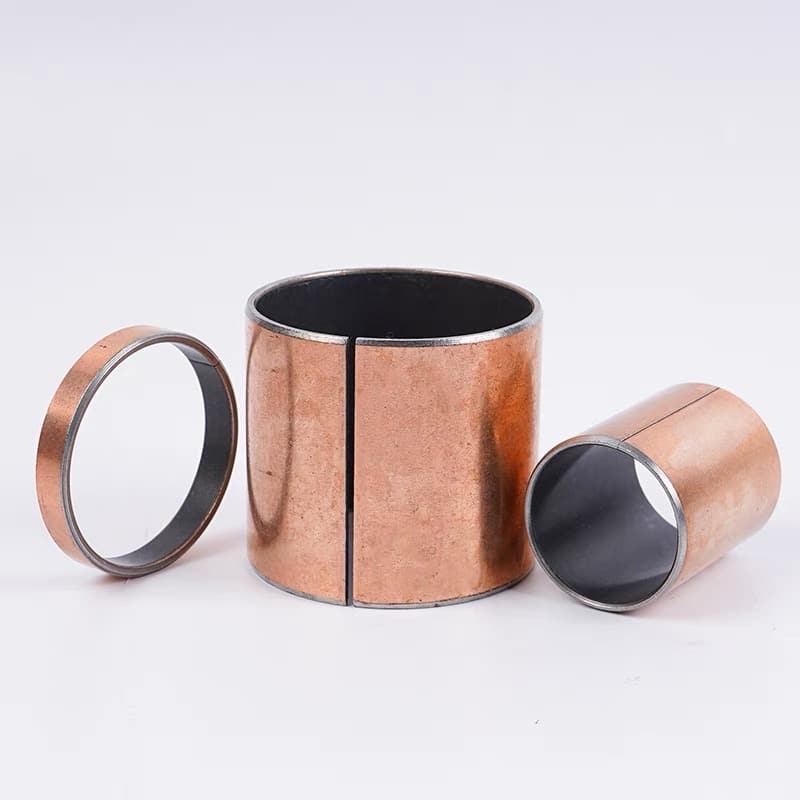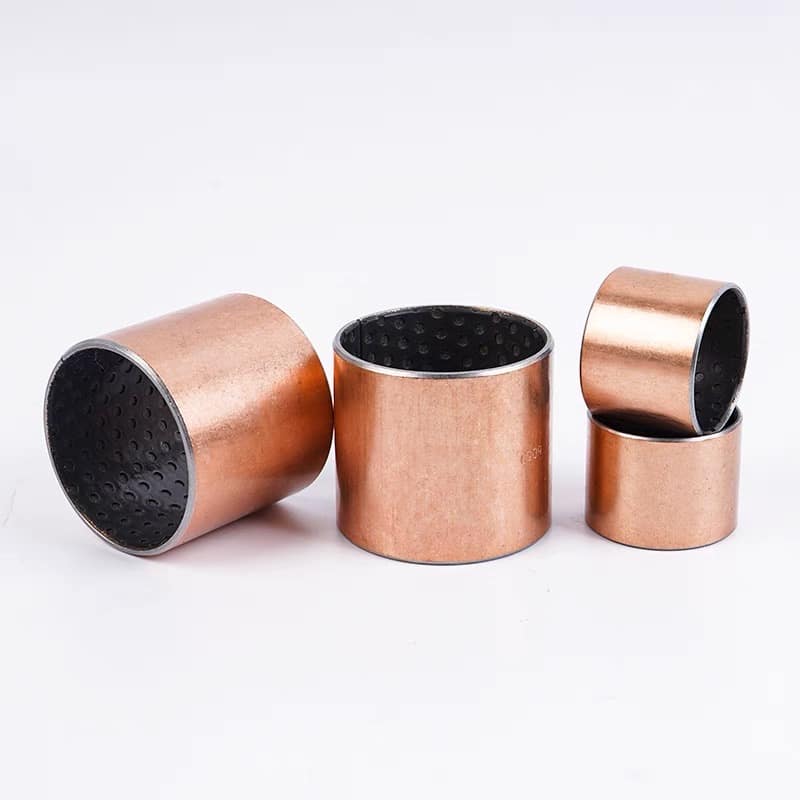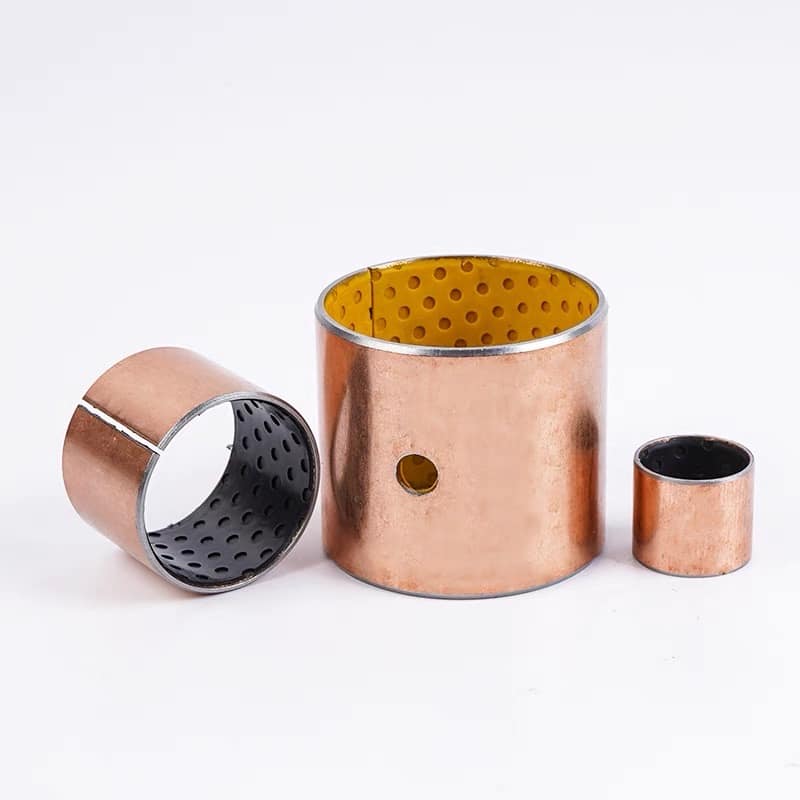Low Friction Bushing
Self-lubricating bearings retain their load-carrying capacity at high temperatures.
Our businesses provide customers with state-of-the-art polymer products that meet demanding application conditions and support key industries. Our High Function composite prides itself on a tradition rooted in product innovation, technical expertise and market leadership, committed to working closely with customers to solve current application problems and future challenges.
Exploring Low-Friction Self-Lubricating Bearings: A Comprehensive Guide
Low-friction self-lubricating bearings, commonly referred to as sleeve or plain bearings, are ingeniously designed to facilitate smooth, maintenance-free operations across a diverse range of mechanical applications. These bearings skillfully combine various materials to create an inherently low-friction surface that does not necessitate additional lubrication. This blog post delves into the key features, applications, and environmental considerations of these versatile bearings.
Key Features of Low-Friction Self-Lubricating Bearings
Material Composition:
- Steel Backing: Provides essential structural support and enhances the overall strength of the bearing.
- Porous Bronze Layer: This intermediate layer is crucial for improving heat dissipation and ensuring strong material bonding.
- PTFE Surface Layer: The outermost layer, made of polytetrafluoroethylene (PTFE), is celebrated for its low friction properties and exceptional wear resistance.
Self-Lubrication: The PTFE layer serves as a built-in lubricant. This feature eliminates the need for external lubrication sources, significantly reducing the maintenance demands typically associated with bearings.
Performance Characteristics:
- Low Coefficient of Friction: These bearings operate with a friction coefficient typically ranging from 0.02 to 0.25 under dry conditions, ensuring efficient performance.
- High Load Capacity: Designed to withstand static loads up to 250 N/mm² and dynamic loads up to 140 N/mm².
- Wide Temperature Range: They remain operational in a vast temperature spectrum from -200°C to 280°C (-328°F to 536°F), making them suitable for extreme environments.
- Wear Resistance: The PTFE layer not only minimizes friction but also enhances the bearing’s durability, extending its lifespan under rigorous usage conditions.
Applications
Low-friction self-lubricating bearings are incredibly versatile, finding utility in various sectors due to their robust performance characteristics. They are commonly employed in:
- Agricultural Machinery: Enhancing the efficiency and reliability of equipment used in farming.
- Automotive Components: Used in parts that require reliable performance under fluctuating temperatures and loads.
- Office Equipment: Ensuring smooth operation of machinery with minimal noise and disruption.
- Hydraulic Systems: Providing reliable performance in fluid power applications.
- Household Appliances: Improving the durability and efficiency of domestic devices.
Customization
These bearings are available in a range of standard sizes but can also be tailor-made to meet specific requirements of unique applications, ensuring that each bearing perfectly suits the intended mechanical environment.
Environmental Considerations
In an effort to meet stringent environmental standards, some variants of these bearings are manufactured without lead, aligning with global regulations aimed at reducing hazardous substances in manufacturing processes.
Selecting the Right Bearing
When choosing a low-friction self-lubricating bearing, it is crucial to consider factors such as the expected load, operating speeds, temperature conditions, and environmental compliance. These considerations will help ensure that the bearing you select will not only fit but excel in its intended application, providing optimal performance and reliability.
Low-friction self-lubricating bearings represent a pinnacle of engineering designed to reduce maintenance and enhance the efficiency of mechanical systems. Their broad applicability and customizable features make them an excellent choice for a wide array of industrial applications. Whether you’re dealing with high loads, extreme temperatures, or challenging environmental conditions, these bearings offer a dependable solution that meets both operational demands and environmental responsibilities.
Self-lubricating bearings are a common fixture in everyday life, playing a crucial role in the functionality of many devices. For example, a bicycle relies on the smooth rotation of bearings to move forward. This basic explanation might not fully capture the essence of self-lubricating bearings, so let’s delve deeper into what these bearings are and their advantages.
Self-lubricating bearings are essential mechanical components, typically used to support rotating shafts, maintain precise alignment, and reduce rotational friction. This enhancement not only improves the performance of the bearings but also extends their lifespan.
The benefits of self-lubricating bearings include enhanced wear resistance, improved lubrication, and reduced friction. These bearings are designed to be durable, possessing a certain degree of elasticity that allows them to better distribute stress across a wider contact area, thereby enhancing load capacity and simplifying the machining of related components. Structurally, their thin walls and lightweight design significantly reduce the overall size of the machinery. Additionally, the surface of these bearings can be coated with various metals, making them suitable for use in highly corrosive environments. Currently, self-lubricating bearings are widely utilized in the sliding parts of various machines.
When bonded to a steel backing, these bearings maintain their form and high load capacity. The combination of PTFE bushings with a steel back creates a composite that excels in load distribution while retaining self-lubricating properties. These bushings can be designed without clearance, and are available in various wall thicknesses—such as 1 mm, 1.5 mm, and 2 mm—enabling an interference fit within their housing. To prevent corrosion, the steel casing can be treated in several ways.
Availability of Low-Friction Self-Lubricating Bearings: These bearings often incorporate a standard dry layer polymer with additives like fiberglass and graphite for enhanced performance. Additional fillers can also be integrated as needed. The range includes rolled bushings, deep drawing bushings, and die cuts, available with or without axial flanges. For environments prone to harsh chemicals, the steel shell and mesh can be manufactured from stainless steel.
Advantages of Using Self-Lubricating Bearings:
- These bearings operate effectively without the need for frequent oiling, which allows for minimal maintenance.
- They exhibit excellent wear resistance and low friction coefficients, leading to a prolonged service life.
- With adequate elastic-plasticity, they distribute stress over a broader contact surface, enhancing load-bearing capabilities.
- The similarity between static and dynamic friction coefficients ensures precise machine operation.
- They help reduce machine vibration and noise, prevent pollution, and improve working conditions.
- During operation, they can form a protective transfer film on the shaft.
- The low hardness requirements for the shaft ease the machining of related parts.
- Their thin-walled design and lightweight nature reduce the overall mechanical bulk.
- The steel backing can be metal-plated to withstand corrosive media, making these bearings extremely versatile and widely applicable in various mechanical components.
Self-Lubricating Bushings – Survive Upsets & Dry Running.
01.
Self-lubricating rod bushing with a low coefficient of friction for smooth actuation.
02.
Satisfaction guaranteed
03.
Ensuring timely delivery
04.
Custom a low friction self-lubricating bearings!
Curabitur non nulla sit amet nisl tempus.
low friction Self-lubricating bushings parts, Making a big difference.
Self-lubricating bushings are designed with a metal-reinforced polytetrafluoroethylene (PTFE) composition, providing a low friction surface that results in exceptionally low wear while maintaining unaltered mechanical properties. These bearings are a top choice for various applications due to their superior performance.
Polytetrafluoroethylene plain bearings are tailored and engineered to meet specific customer needs, offering customized solutions that enhance system efficiency.
The innovative design of self-lubricating bearings allows for the simplification of mechanical systems while saving space, weight, and costs. They ensure consistently smooth adjustments, eliminate slippage, and reduce annoying noises, making them ideal for a wide range of applications.




